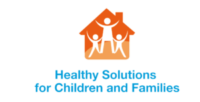aBA
ABA therapy applies our understanding of how behavior works to real situations. The goal is to increase behaviors that are helpful and decrease behaviors that are harmful or affect learning.
What is Applied Behavior Analysis?
Applied Behavior Analysis (ABA) is a therapy based on the science of learning and behavior.
Behavior analysis helps us to understand:
- How behavior works
- How behavior is affected by the environment
- How learning takes place
More about ABA
ABA therapy programs can help:
- Increase language and communication skills
- Improve attention, focus, social skills, memory, and academics
- Decrease problem behaviors
The methods of behavior analysis have been used and studied for decades. They have helped many kinds of learners gain different skills – from healthier lifestyles to learning a new language. Therapists have used ABA to help children with autism and related developmental disorders since the 1960s.
How does ABA therapy work?
Applied Behavior Analysis involves many techniques for understanding and changing behavior. ABA is a flexible treatment:
- Can be adapted to meet the needs of each unique person
- Provided in many different locations – at home, at school, and in the community
- Teaches skills that are useful in everyday life
The goal of any ABA program is to help each person work on skills that will help them become more independent and successful in the short term as well as in the future.
Planning and Ongoing Assessment
A qualified and trained behavior analyst (BCBA) designs and directly oversees the program. They customize the ABA program to each learner’s skills, needs, interests, preferences and family situation.
The BCBA will start by doing a detailed assessment of each person’s skills and preferences. They will use this to write specific treatment goals. Family goals and preferences may be included, too.
Treatment goals are written based on the age and ability level of the person with ASD. Goals can include many different skill areas, such as:
- Communication and language
- Social skills
- Self-care (such as showering and toileting)
- Play and leisure
- Motor skills
- Learning and academic skills
The instruction plan breaks down each of these skills into small, concrete steps. The therapist teaches each step one by one, from simple (e.g. imitating single sounds) to more complex (e.g. carrying on a conversation).
The BCBA and therapists measure progress by collecting data in each therapy session. Data helps them to monitor the person’s progress toward goals on an ongoing basis.
The behavior analyst regularly meets with family members and program staff to review information about progress. They can then plan ahead and adjust teaching plans and goals as needed.
Behavior analysts support and assess people with emotional disabilities, and they implement plans to improve behavior. Behavior analysts work in a variety of settings, including their patient’s home or school. Working with a supervisor, teachers, parents, and other staff, behavior analysts conduct assessments and set social and developmental goals for their clients. Behavior analysts are patient with their clients and are understanding of their clients’ needs.
